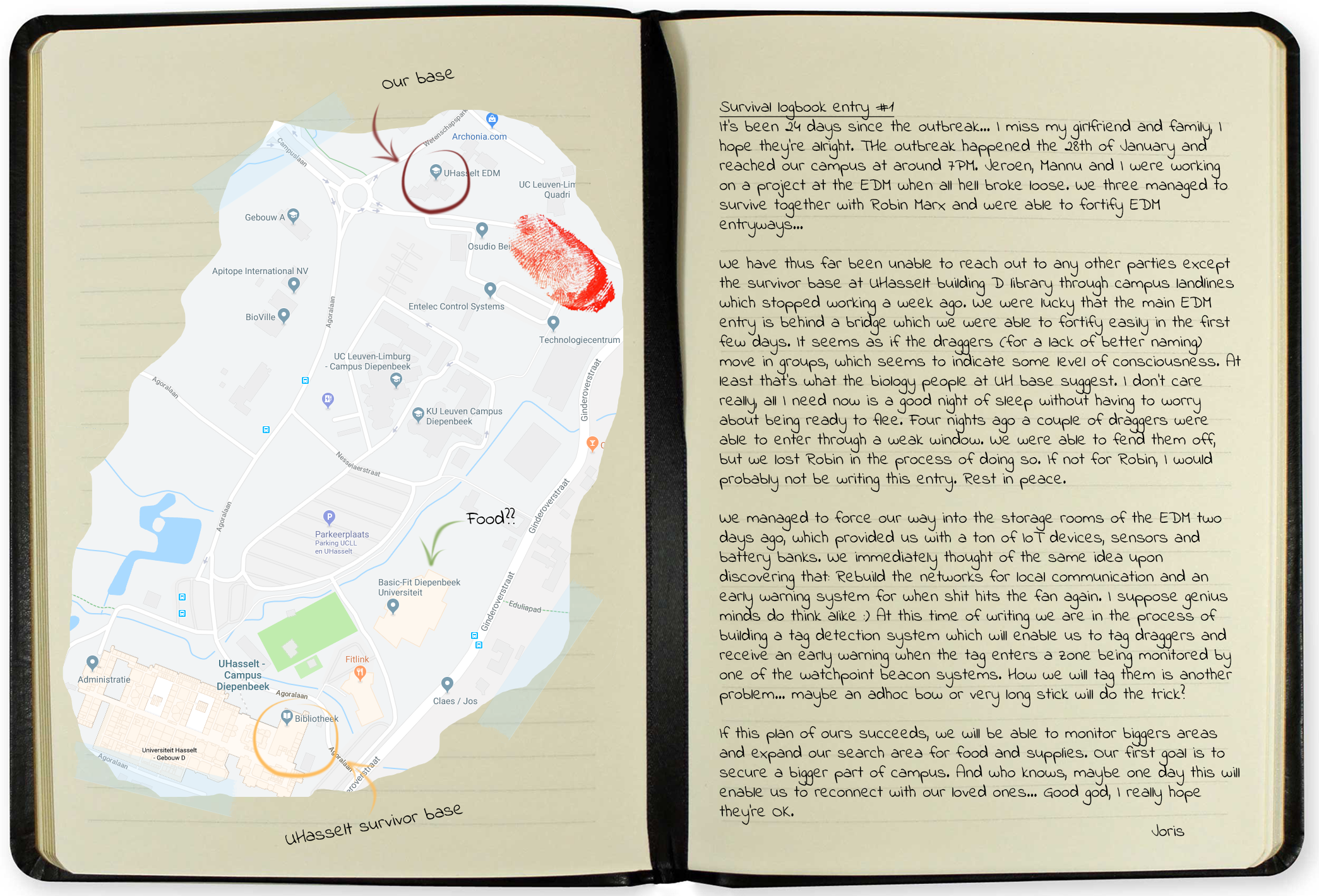IoT Zombie Apocalypse
This project was in collaboration with Joris Herbots and Mannu Lambrichts. The goal of the project was to create a robust IoT system for a chosen use case as part of the course "Networking and Interfacing IoT Platforms". We decided for the project that we would build an IoT system to defend and monitor your own base during a zombie apocalypse and meanwhile restoring communication with other bases using long-range technology (in our case LoRa).
Initial Phase
During the initial phase, we had to hand in a motivation for the specific use cases that we potentially wanted to cover, nothing unusual for a course project. However, to ensure that we would get this specific topic, my groupmember Joris (the more creative one of the group) decided to spice things up a bit. He created the following image that we handed in together with our normal motivation (description of first ideas involving technology stack):

As one would expect from such a nice drawing, we got the topic :).
The Testing Phase
At the beginning of the project, we had to establish which technologies we were going to use for the project. Our initial idea went to using Bluetooth Low Energy (BLE) as method of communication between devices since the amount of data was limited and battery usage would be optimized. However, after testing the protocol with the hardware (Pycoms) in different scenario's (in the base, around the base, in the forest, ... ), we found that the theoretical limit of 70m could not be reached at all.
Using this protocol, we only reached distances of around 30-40m and we found another interesting fact involving BLE signals. They get blocked by live trees. The moment we would put one of the Pycoms behind a tree, the full signal would be blocked off and nothing could be found anymore. So... lessons learned, do not deploy BLE IoT devices in a forest.
After some more tests, we had to throw our initial idea of deploying "zombie tags" away since it did not seem feasible with the available hardware and techniques. Also maintaining and replanting the tags on the zombies would be too difficult compared to the provided benefits. Because of this reason, we transitioned the project to building an IoT mesh network using LoRa. Using this technology, we would be able to transmit messages at ranges of around 2km and be able to lower the power usage by letting the devices stay in sleep mode until a specific trigger. The trigger would be a laser detection placed in specific locations of interest. We choose this approach because the infrared sensors and camera hardware at the location were either too power consuming or too inaccurate (lots of false positives).
End Result
The project ended up being a great success and was without a doubt my favourite project in my student days. The code of the backend server is also available on Github at the following location: https://github.com/JorisHerbots/niip_iot_zombie_apocalypse. You can see the results of the project down below in these two videos:
Technical Demonstration
This video was required with the project assignment. It describes both the network stack, the hardware and the visualization of the detection system. There is no audio with the video, but the animated text should give sufficient information.
Short Film
During the groupswork we had decided to make a short film around the zombie apocalypse team. This was not required in the assignment, however given the situation we thought of and the hardware we had available, we saw the ideal opportunity to make this film out of interest.